DJI Osmo Pocket Review
A tiny, gimbal-stabilised 4K camera with massive potential
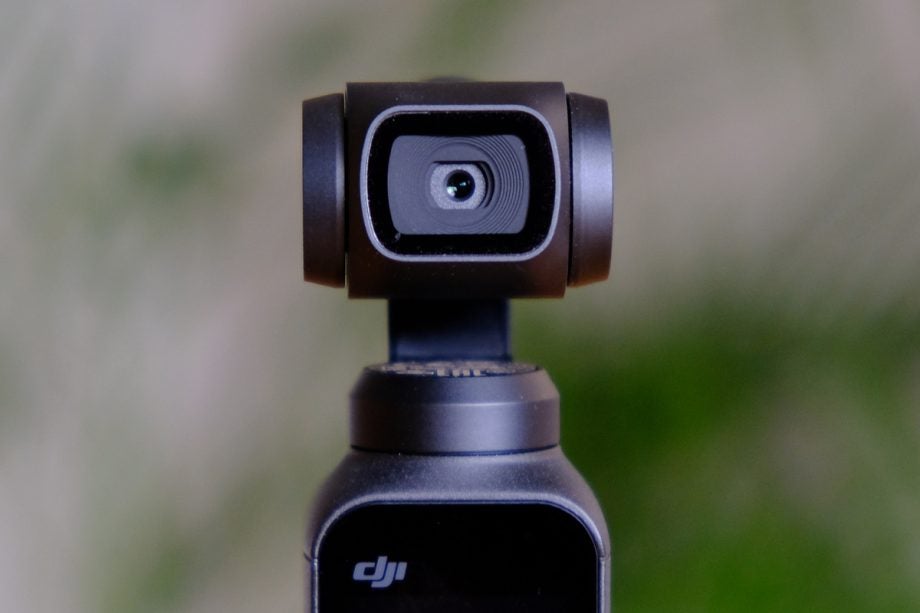
Verdict
What is the DJI Osmo Pocket?
The Osmo Pocket is the world’s smallest 4K camera with a three-axis mechanical gimbal.
Designed for vloggers, YouTubers and budding Edgar Wrights, it’s about the size of a Mars bar and weighs just 116g.
The Osmo Pocket’s camera and gimbal are similar to the one found on the DJI Mavic Air drone, with the Pocket having a brighter f/2.0 aperture to boost low light performance and a slightly narrower 25.7mm focal length.
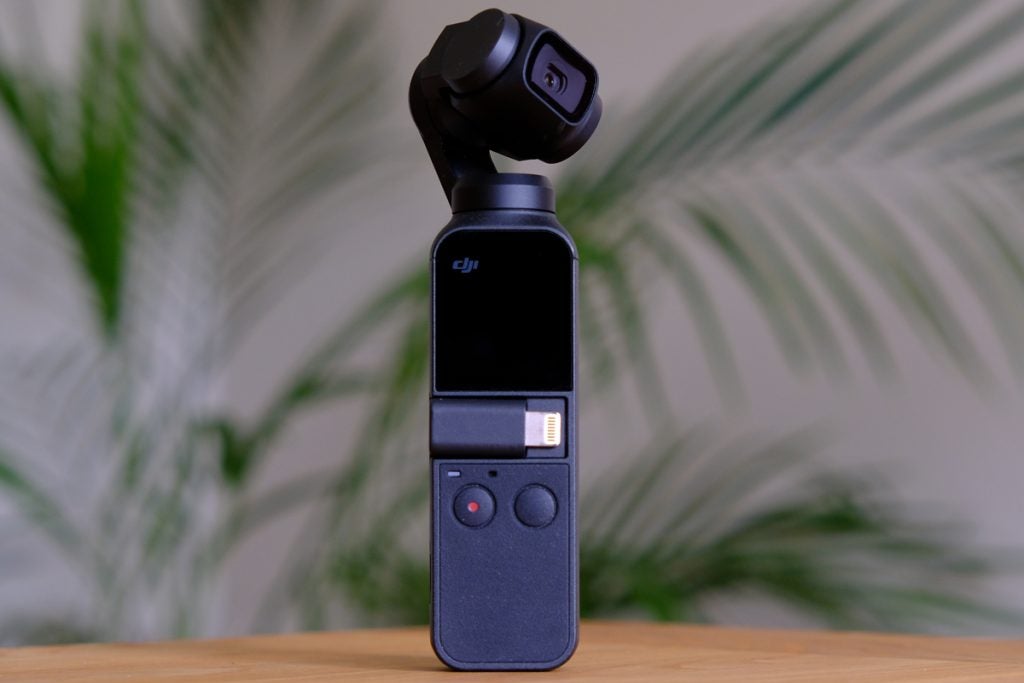
While it looks like the spiritual successor to pocket cameras like the Flip Video and HTC Re, and a rival to the GoPro Hero 7 Black, the Osmo Pocket is pretty much unique. Its USP is that three-axis gimbal, which combines with software features like object tracking to help you create cinematic video effects that just aren’t possible on smartphones.
Unlike action cameras, the Osmo Pocket isn’t waterproof without an optional case, and needs accessories and your smartphone to unlock its full potential. Your iOS or Android phone plugs into its side via the included Lightning and USB-C adaptors, which then launches DJI’s new Mimo app.
If you’re prepared to put up with the slight awkwardness and extra expense of this modular design, the Osmo Pocket is an excellent, unique little camera for anyone who wants to take a step up from smartphone video, both in quality and creative options.
Related: Best vlogging cameras
DJI Osmo Pocket – Design
The Osmo Pocket is incredibly small for a camera with a mechanical gimbal. Some might wonder why you’re carrying around an optician’s ophthalmoscope, but everyone I showed it to was just amazed by its size, even those who’d seen it before in photos.
In the hand, the Osmo Pocket feels very well built and comes with a carry case for added protection. On the top is its crowning glory – that three-axis gimbal, which holds a tiny camera that can shoot 4K video at 60fps and 12-megapixel stills.
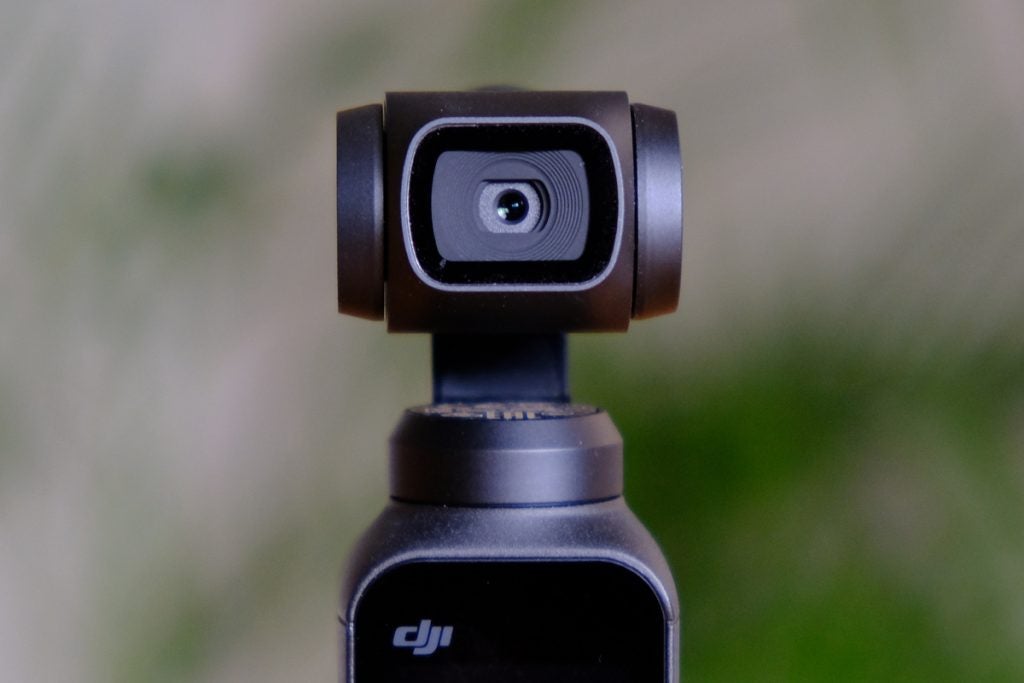
Mechanical gimbals bring two big benefits. The first is stabilisation. Like the GoPro Hero 7 Black and phones like Google’s Pixel 3, the Osmo Pocket senses movement in three axes.
The difference is that, instead of converting that into electronic image stabilisation (like the GoPro) or combining E.I.S with optical lens stabilisation (like the Pixel 3), the Osmo Pocket counterbalances your movement with three tiny motors across each axis.
Despite some big recent advances in smartphone and action camera stabilisation, the gimbal remains the gold standard for smooth video in all lighting conditions, as the Pocket confirmed in my side-by-side comparisons. The traditional downside of gimbals is bulk, but the Osmo Pocket negates that by being, well, pocketable.
The other bonus of gimbals is cinematic camera effects. Because the motors can move the camera around in a controlled way, you can create really some nice video effects like pans or tilts. That means you can think beyond just framing videos, and start weaving together fancy camera moves that give your videos some professional sparkle.
At least, that’s the theory. Perhaps an even bigger challenge DJI faced when making the Osmo Pocket this small was making it usable. It’s done a good job here, and the Pocket is fun to use after some practice, but you need to learn its foibles and limitations first.
Related: Best drones
DJI Osmo Pocket – Controls and features
The Osmo Pocket is a slight compromise of form and function, but it packs a huge amount into its 12cm-long body.
Below its gimbal are two buttons and a one-inch touchscreen. This surprisingly useful postage stamp lets you preview videos and stills, as well as giving you access to some, but not all, of its controls.
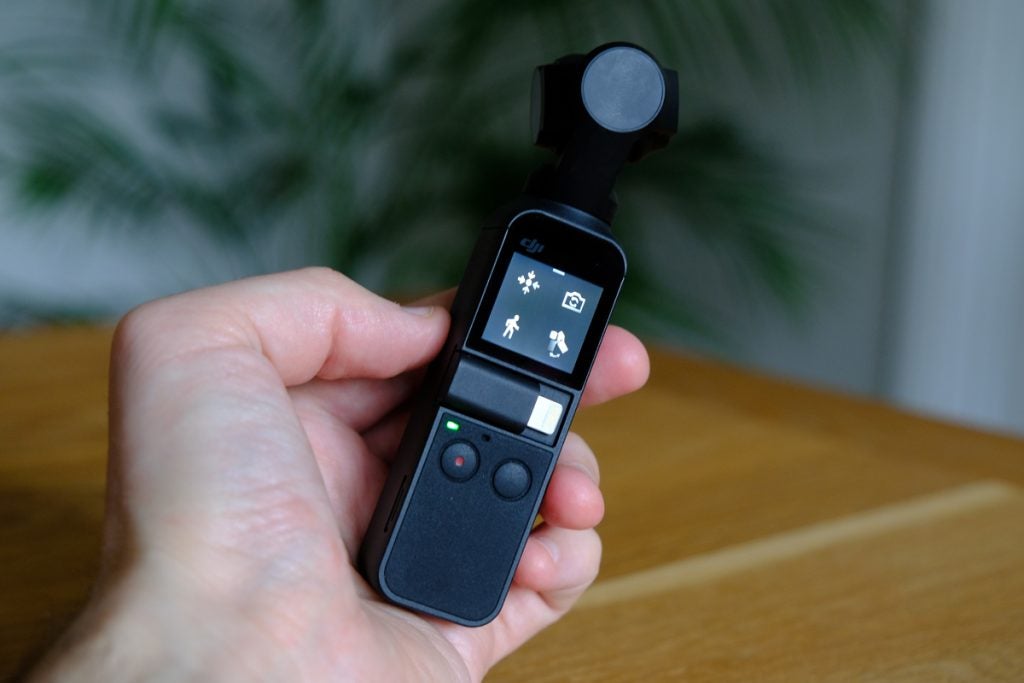
Press the power button and it’s ready to go in five seconds. You can then swipe the screen from the right for shooting modes (Photos, Video, Slo-Mo, Timelapse or Pano). An extra swipe right lets you choose the shooting mode, which include 4K and 1080p at both 60fps or 30fps.
Flick up from the base of the screen and you’ll get finer gimbal controls, like the ability to put it in ‘follow’ mode (which locks the roll axis, while stabilising pan and tilt), ‘tilt locked’ (which helps you shoot video in portrait), and ‘FPV’ (an action cam-style locking of the roll axis and another dig in GoPro’s ribs).
What you can’t do with the Osmo Pocket’s screen is move the camera while recording, which is a slight shame. To unlock its creative potential, you need to attach your phone and use the controls in the new DJI Mimo app.
Underneath the screen is an expansion slot, and this is where you slide in the Lightning or USB-C connector (supplied in the box) for your phone, and a few other optional accessories.
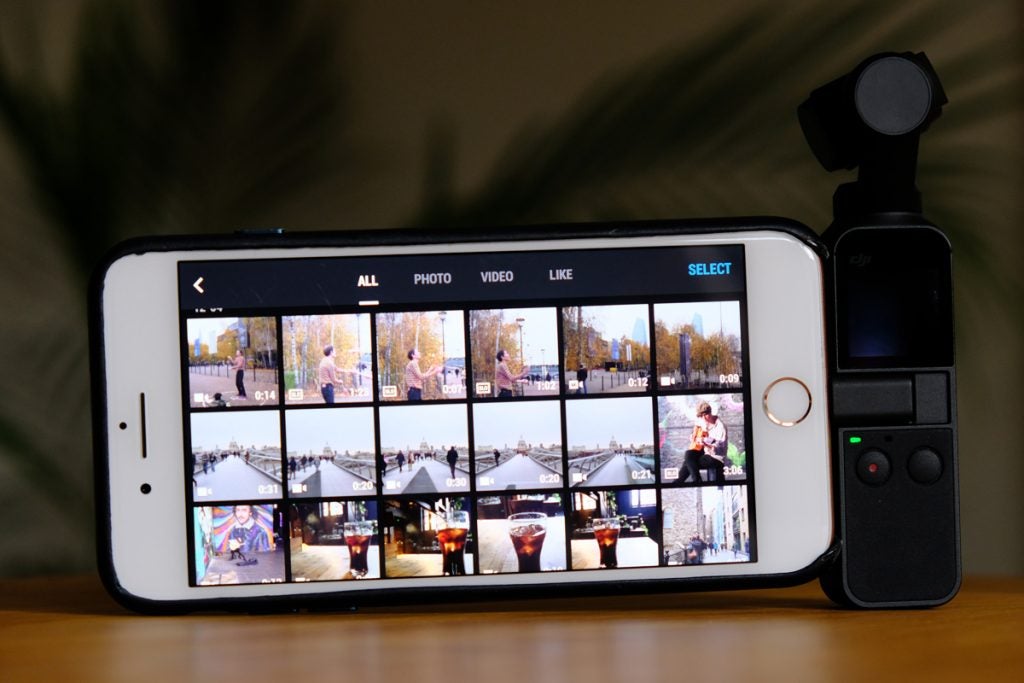
I don’t think DJI has quite nailed the way your phone connects to the Osmo Pocket – my iPhone felt slightly loose and, because of the connector’s position, was never flush with either the Osmo or flat surfaces. My Apple iPhone 8 Plus, which isn’t exactly huge for a smartphone these days, also dwarfed the Osmo Pocket and meant it wasn’t exactly an ergonomic delight.
That said, you can set up a shot in the DJI Mimo app (like a motion timelapse), unplug your phone, and the Osmo Pocket will still carry out the shot on its own. You just can’t control the Osmo Pocket remotely from your phone or use a physical control wheel – to do that, you need some optional accessories that aren’t bundled in the box…
Related: Best compact cameras
DJI Osmo Pocket – Accessories
The flipside of the Osmo Pocket’s incredibly compact size is that there isn’t one perfect way to control it.
Use it on its own and you have an incredibly compact, stabilised video camera, but limited controls and a small screen for framing shots. Plug in your phone and you have a massive viewfinder with lots of controls, but an unwieldy camera and a sometimes frustrating touchscreen d-pad for panning.
This where its accessories come in. Together they help fix the three things you can’t do with the Osmo Pocket out of the box: control it wirelessly from your phone, mount it somewhere, or move the camera with physical controls.
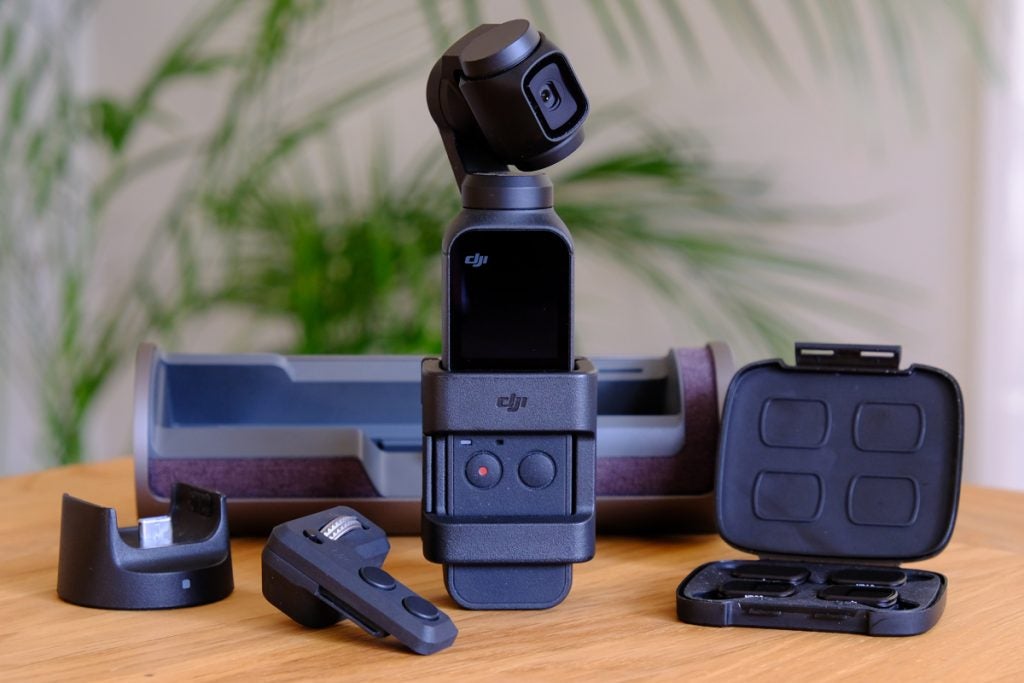
Enter the Wireless Module (£53), Accessory Mount (£23) and Controller Wheel (£53). These can bought as part of a £99 ‘Osmo Pocket Expansion Kit’, which I’d recommend doing if you can.
The Controller Wheel is, in particular, a very handy third way to control the Osmo Pocket. When using the DJI Mimo’s virtual d-pad, it can be quite difficult to consistently control pan speeds or avoid finger slippage. But the Controller Wheel’s grippy finish and ability to work with tilts too (just flick the switch below it) really boost the Osmo Pocket’s cinematic potential. It’s a shame it isn’t included in the box.
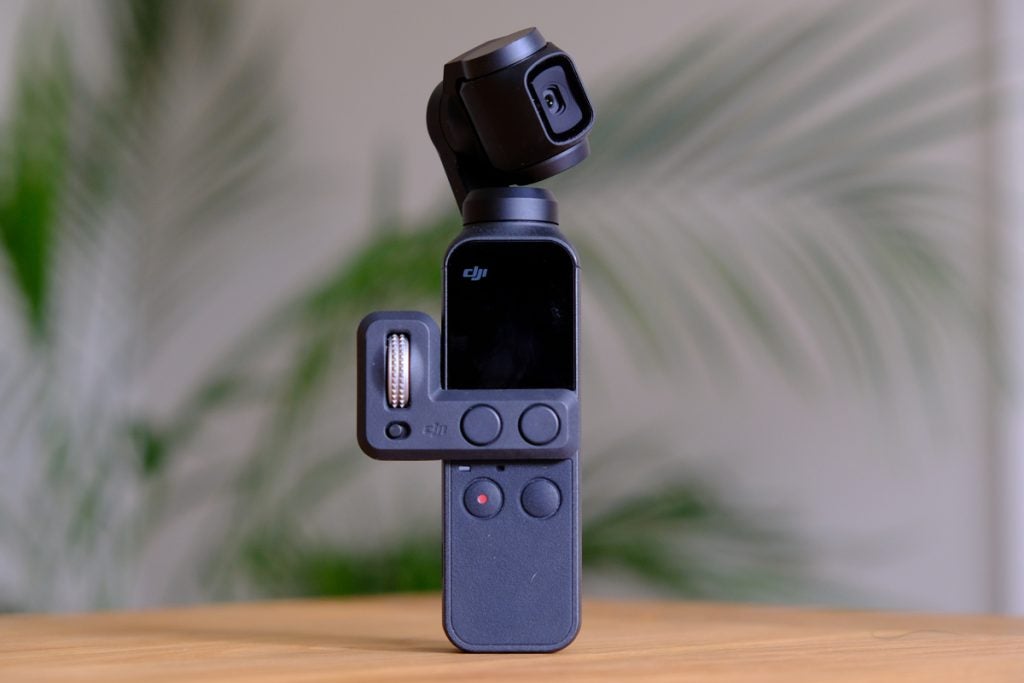
Still, a good sign for the Osmo Pocket is the sheer number of other accessories that are en route. There’s a case of ND (Neutral Density) filters, which limit the amount of light coming into the lens and can be used to lengthen shutter speeds for adding motion blur to videos or stills.
Vloggers will also be keen to get the 3.5mm adaptor for adding an external mic, and potentially the Extension Rod or Waterproof Case. That charging case also has a satisfyingly sci-fi opening mechanism, plus the ability to hold your ND filters and microSD card.
DJI hasn’t released pricing or release dates for these accessories yet, but it shows this is just the start for the Osmo Pocket. They also collectively bring it into the realm of being a tool for pros to consider (as long as they can accept the 1//2.3in sensor), as well as being something for amateurs to explore.
DJI Osmo Pocket – Performance
Some occasionally fiddly controls aside, the Osmo Pocket punches well above its weight in most areas, including battery life, video quality and all-round camera performance.
It’s an excellent vlogging camera, certainly the best around at this size and price point. Press its function button three times and the camera will flip around into full narcissist mode, with FaceTrack automatically ready to follow your mug. The Osmo Pocket’s focal length is also good for talking to camera (as long as you don’t mind holding it at arm’s length to get your whole head in shot), and the bright aperture can give you some lovely bokeh too.
The only limitation is audio quality. There are two microphones, one on the front and one underneath, which together give you passable audio. The sound you’re recording does need to be directly in front of the Osmo Pocket, though, and it can struggle a little with wind noise. I’m looking forward to trying it with that forthcoming 3.5mm adaptor.
Moving back to video quality, the camera’s ability to focus (rather than being stuck in fixed focus like a GoPro) is a real bonus, if not without its downsides. The good news is that focusing on foreground subjects means you can get said bokeh, which makes footage or stills look like they’ve come from a much bigger camera. But I did also find that its continuous autofocus was occasionally sluggish when transitioning between near and far subjects, particularly at night.
Some occasional focus hunting aside, it’s great to have the flexibility of choosing focus points in video, and this also allows DJI’s subject tracking mode called ActiveTrack. Like on DJI’s drones, this lets you draw a square around the subject you want it to follow and, as long as you or the subject don’t move too quickly, it’ll smoothly turn the gimbal to keep it in shot. It mostly works well and is great for adding extra movement to your videos, although it’s sadly not available when shooting in 4K.
Two of the Osmo Pocket’s other shooting modes also really benefit from its three-axis gimbal. With Motionlapses, you can draw a ‘path’ of up to four points across its 180-degree view for it to pan between while recording a timelapse.
With a bit of patience, you can get some great effects that aren’t possible with a smartphone (unless you put one in a gimbal like the DJI Osmo Mobile 2).
Similarly, its slow motion mode works well if you film while simultaneously moving your feet and the camera. Again, there are some limitations – it’s only available in 1080p and it crops your image in a big way, making it tricky if you’re close to your subject. But as long as you shoot in decent light, you can get some lovely, dramatic slo-mo.
I was impressed by the Osmo Pocket’s battery life too. DJI claims it can shoot 4K at 30fps for two hours, and in my tests it lasted 1 hour 52 minutes. Because you’ll probably be shooting snippets rather than one-shot films, you’ll find the Osmo Pocket will last you most of the day in practice – and you can always top up its battery via the USB-C port.
DJI Osmo Pocket – Video quality
The Osmo Pocket’s video quality is impressive for such a small camera, but it’s also no miracle worker.
Behind that 25.7mm lens is a 1//2.3in sensor, which in terms of size is in the ballpark of what you’ll find in compact cameras and premium smartphones.
There’s more to image quality than sensor size, but that does restrict the Osmo Pocket’s performance in challenging conditions, like mixed lighting and low light. In terms of dynamic range, it does have a tendency to crush the blacks and blow out the sky a little, and can struggle with sun flares a little on bright days.
Of course, that’s pretty typical of a camera this size, it’s just worth bearing in mind its limitations. You’re not really buying the Osmo Pocket for the camera itself, which isn’t a significant leap from a flagship smartphone, but what the gimbal and software let you do with that camera. And those things are pretty great.
In good light, its video is sharp, with accurate colour and very few artefacts, and it’s usually fine to leave white balance set to ‘auto’.
The Osmo Pocket does also perform pretty well in low light, for its size. There’s naturally a bit of noise when shooting at night or indoors, which is particularly noticeable in slo-mo, but its footage is more than usable and it’s free from the artefacts you’d get from a gimbal-less camera that’s trying to apply electronic stabilisation.
Dig into the Pocket’s menus and you’ll find a surprising amount of manual controls. You can tweak ISO (from 100 to 3200) and shutter speed (up to 1/8000). There are also options for anti-flicker (to stop fluorescent lights strobing), adding a histogram, and zebra lines for checking overexposure. You can also change the video bitrate from ‘Fine’ to ‘Superfine’, though I didn’t see much difference between the two.
While it’s great to have these options, in some ways they feel like overkill for a camera with this sensor size, which wouldn’t generally be used for pro work. This makes me think that DJI may also be planning a professional, if non-pocketable, version of the Osmo Pocket, perhaps with the one-inch Hasselblad camera like the one seen on its DJI Mavic 2 Pro.
Why buy the DJI Osmo Pocket?
If you’re a vlogger, YouTuber or just someone who wants to take a step up from smartphone video, then the Osmo Pocket is a great new tool.
It’s the only pocket camera that combines 4K recording with a three-axis gimbal, which makes it pretty unique. Throw in software tricks like ActiveTrack and Motionlapses and you have a versatile little camera that does things that none of its rivals can.
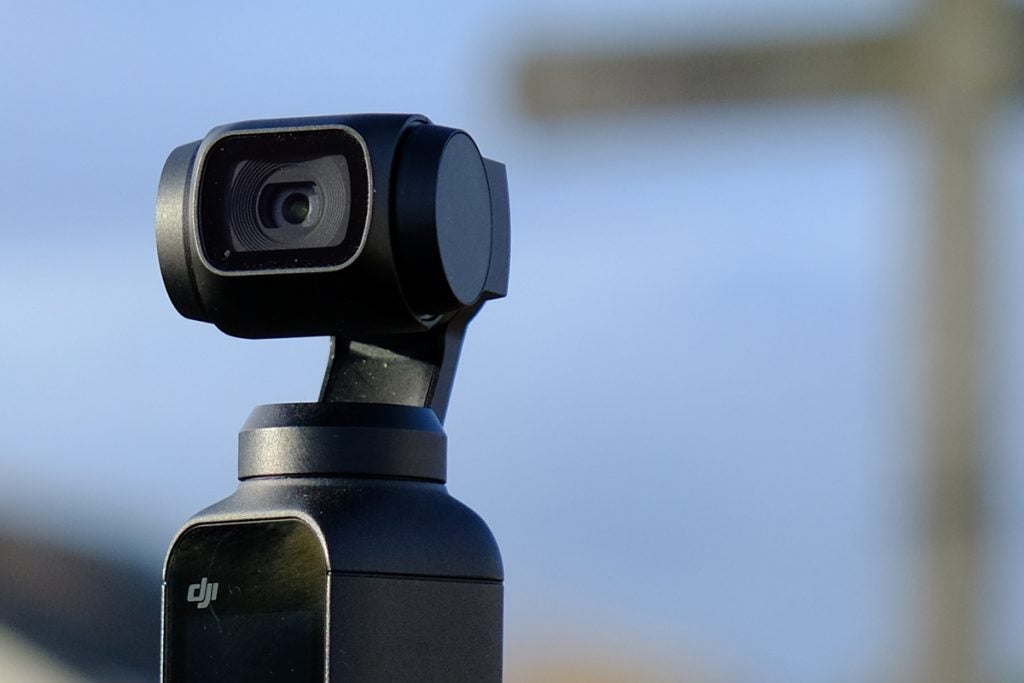
Of course, the Osmo Pocket isn’t without its limitations. Its audio doesn’t quite match its video quality, and you might have to shell out on extra accessories to really unlock its potential. Also, while it’s capable of shooting crisp, cinematic 4K video, the quality itself isn’t a huge leap up from a flagship smartphone, even if its stabilisation and creative effects are.
Those who regularly shoot out in the rain or while doing extreme sports are probably still better off with the GoPro Hero 7 Black too.
Once you’ve learnt the DJI Osmo Pocket’s foibles and limitations, though, it becomes a charming, powerful little creative tool that is, like all the best cameras, always with you.
Verdict
A charming, unique little camera that mostly overcomes the limitations of its size to produce impressive, cinematic video


